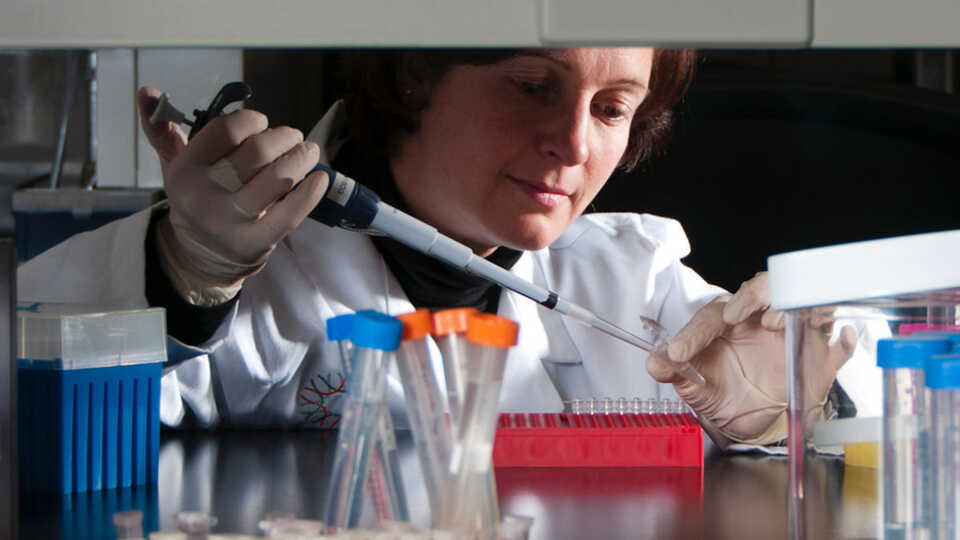SAN FRANCISCO (November 23, 2015) – The California Academy of Sciences is pleased to announce that Dr. Shannon Bennett will serve as the institution’s next Chief of Science and Harry W. and Diana V. Hind Dean of Science and Research Collections beginning on January 1, 2016. In this role, Bennett will be responsible for the Academy’s programs of scientific research and exploration, as well as for overseeing the Academy’s priceless collection of nearly 46 million scientific specimens from around the world. Bennett is currently the Academy’s Associate Curator of Microbiology and holds an appointment as one of the institution’s Patterson Scholars in Science and Sustainability.
“We are thrilled to welcome Shannon into this new leadership role at a pivotal moment of Academy growth,” says Dr. Jonathan Foley, Executive Director of the California Academy of Sciences. “Beyond her brilliant career in microbiology, Shannon has demonstrated a standout talent for leadership and visionary thinking. As our next Chief of Science, Shannon will help to shape the Academy’s ambitious scientific research efforts, including bold new initiatives to explore, explain, and sustain the world’s coral reefs, rainforests, and California’s iconic ecosystems.”
As the Academy’s first-ever Associate Curator of Microbiology, Bennett has broadened the institution’s research scope to include a dedicated focus on viruses and bacteria. In addition to conducting full-time research on infectious diseases that can be transmitted from animals to humans, Bennett was elected by her peers to serve as Chair of Curators Forum—an internal sharing and decision-making group for Academy Curators—for the past two years.
Prior to her work at the Academy, Bennett was an Associate Professor at the Asia-Pacific Institute of Tropical Medicine and Infectious Diseases, part of the School of Medicine at the University of Hawaii. During her seven years at the Institute, she led a number of research projects on virus evolution, identification, and transmission with funding from the National Institutes of Health. She combines advanced technologies from genomics and bioinformatics with field explorations to study dengue, hantavirus, influenza, and other viruses, as well as bacteria such as leptospirosis and those found in mosquito vectors. Since receiving her PhD in Zoology from the University of British Columbia, Bennett’s work has taken her from Puerto Rico to Texas, Thailand, and the hilly streets of San Francisco.
“With the vast sustainability challenges facing our planet today, the need for strong programs of scientific research has never been greater,” says Dr. Shannon Bennett. “It is a true honor to serve as the Academy’s Chief of Science during this crucial time, especially since the Academy is about to make a major investment in science—our largest in a century—by bringing six new curators to our team. We hope to do nothing less than change the way modern scientists work to help shape Earth’s future.”
In her new role, Bennett will succeed Academy scientist and internationally renowned botanist Dr. Meg Lowman as Chief of Science and overseer of the Academy’s invaluable scientific collections. Nicknamed the “real-life Lorax” by National Geographic and “Einstein of the treetops” by the Wall Street Journal, Lowman pioneered the science of canopy ecology. For more than 30 years, she has worked relentlessly to map biodiversity in forest canopies and to champion forest conservation around the world, innovating new research methods and conservation strategies along the way. After completing her two-year term in this role, Lowman will now have a chance to return to her favorite place—the treetops. She will remain the Academy’s Senior Curator and Lindsay Chair in Botany, focusing her attention on her research and education outreach to young aspiring scientists.
“The entire Academy family is grateful to Meg Lowman for her tremendous contributions to our institution over the past two years,” says Foley. “During her service as the Academy’s Chief of Science, Meg refocused our research division to place sustainability at the core of each curator’s work, meaningfully increased the division’s focus on science communication and outreach, and developed leadership structures that are already helping to move the Academy successfully into the future. Now that her two-year term has come to an end, it’s time for us to allow her to dedicate more time to her dual passions of scientific research and education. The treetops are calling, and we’re excited to see how she continues to revolutionize the field of canopy ecology that she helped to pioneer.”
In addition to her canopy ecology research, Lowman will lead a special project to develop partnerships with global research and conservation organizations, serving as the Academy’s Director of Global Initiatives. Her important advocacy for modern sustainability work will help advance the Academy’s major new initiatives to explore and sustain global coral reefs and rainforests as well as California’s treasured biodiversity.
“It has been an honor to lead the Academy’s team of renowned scientists in their commitment to creating a sustainable future, and I’m excited to continue these efforts in my new roles,” says Dr. Meg Lowman. “Shannon is an inspiring colleague and a deeply-committed public scientist who understands the vital link between human health and the wellbeing of our planet. We share a calling, as scientists and parents, to help our children and grandchildren respond to Earth’s most critical challenges. I look forward to working with Shannon to ensure a seamless leadership transition before returning to the scientific work that I have committed my life to pursuing.”
Lowman will continue to chair the search committee—of which Bennett is also a member—that is working to bring six exceptional new curators on board at the Academy. Interviews for these positions will begin in early 2016, and the Academy expects to make hiring decisions over the course of the year. These new curators will join a world-class team of explorers and scientific leaders who are working to explore, explain and sustain life on Earth.
